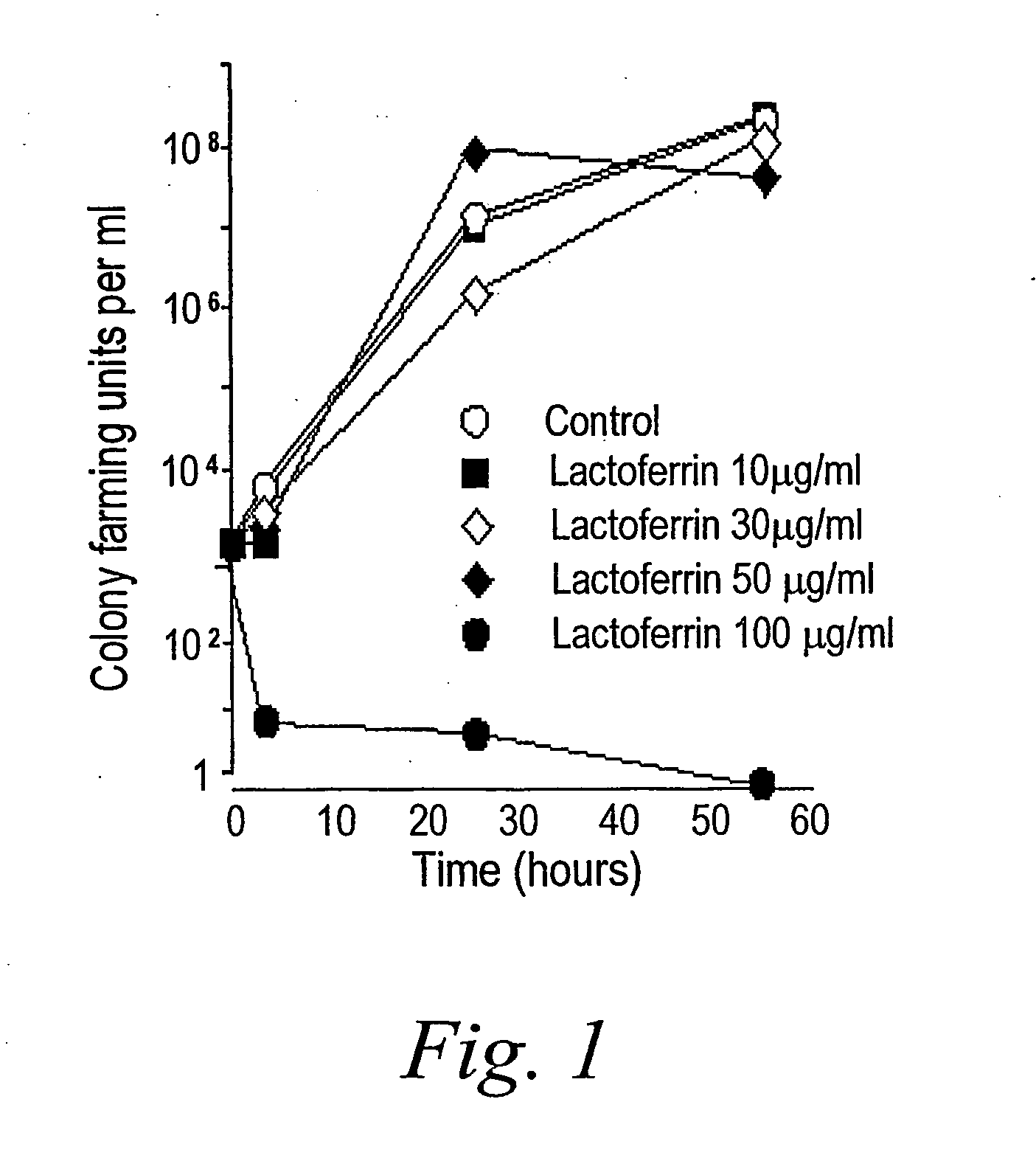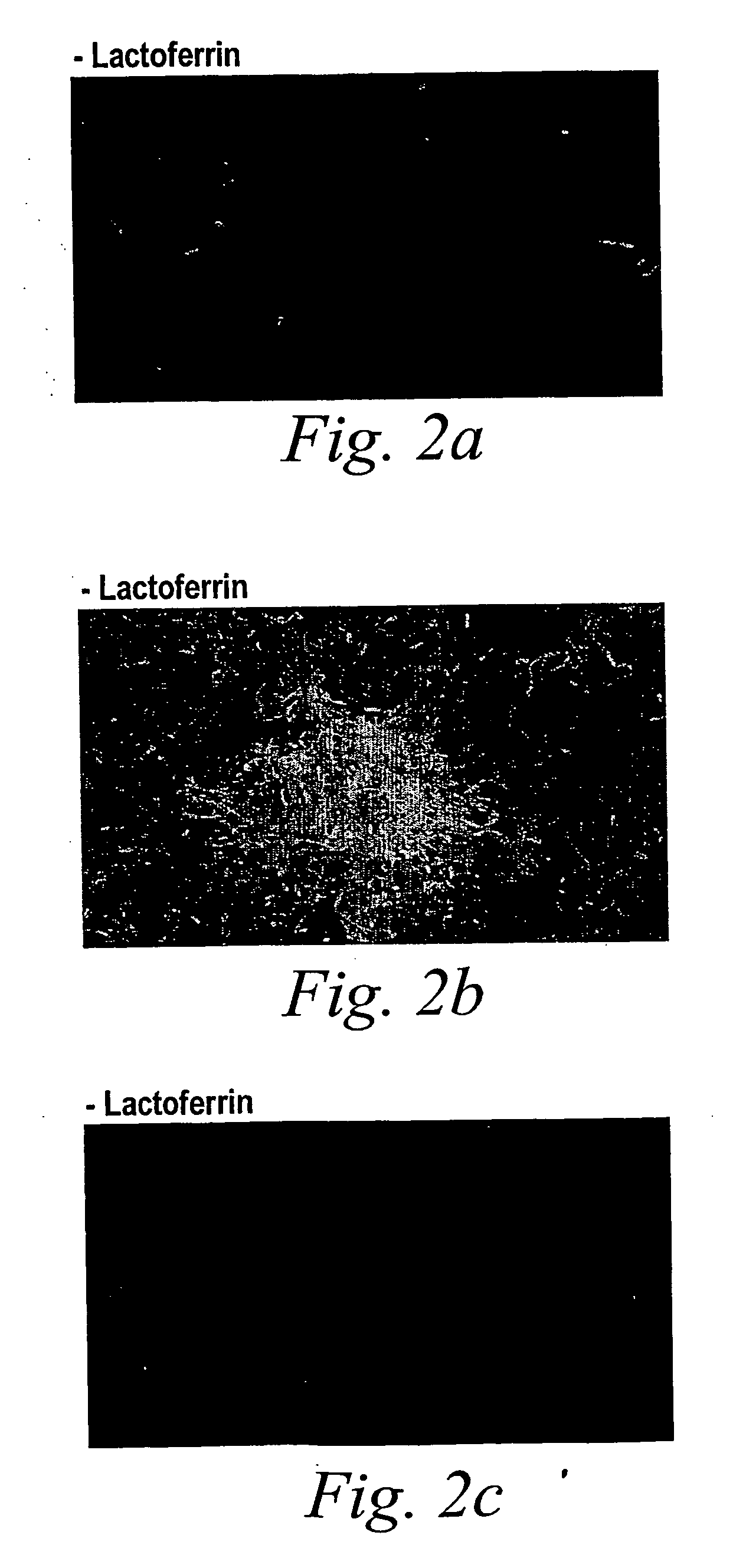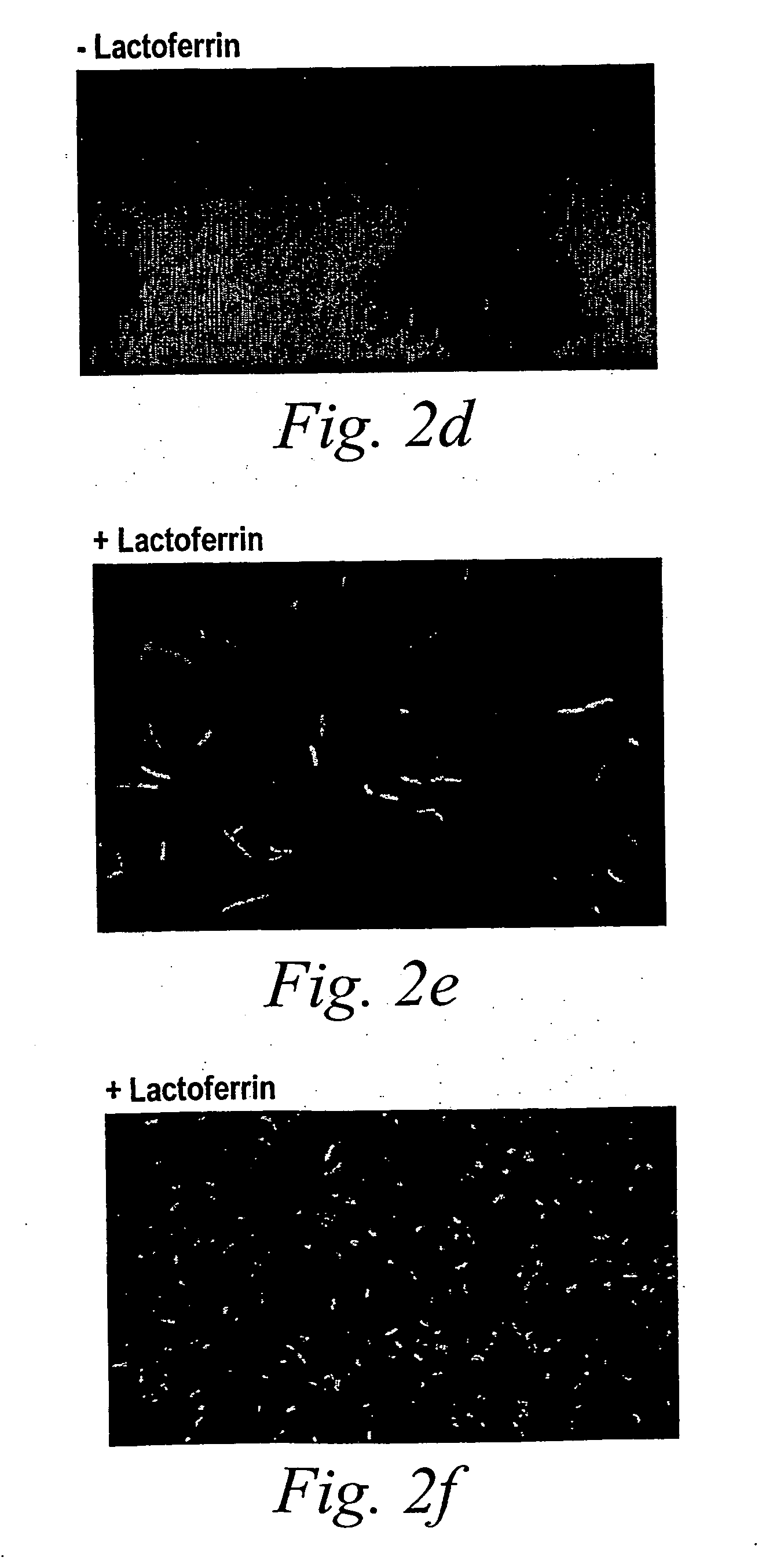Methods of inhibiting and treating bacterial biofilms by metal chelators
a technology of metal chelators and biofilms, which is applied in the direction of biocide, antibacterial agents, peptide/protein ingredients, etc., can solve the problems of corroded pipes, many water-processing plants, and the transition from a free-living, independent existence to a biofilm lifestyle can be devastating, so as to stimulate the surface motility and inhibit the formation of biofilms
- Summary
- Abstract
- Description
- Claims
- Application Information
AI Technical Summary
Benefits of technology
Problems solved by technology
Method used
Image
Examples
example 1
Effect of Lactoferrin on Bioflim Formation
[0090] At high concentrations, lactoferrin is known to limit bacterial growth by sequestering iron. In this regard, lactoferrin acts like other nutrient-depriving host defense molecules, such as transcobalamins (which bind vitamin B12), and calprotectin (which binds zinc). Lactoferrin can also be bactericidal by binding lipopolysaccharide and disrupting bacterial membranes, and it can enhance killing by other antibiotics.
[0091] To determine whether lactoferrin has anti-biofilm activity that is distinct from these known properties, the effect of a sub-inhibitory concentration of lactoferrin (20 μg / ml) on biofilm development was examined. This concentration of lactoferrin did not affect the growth rate of free swimming P. aeruginosa PAO1 (FIG. 1).
[0092] To evaluate the effect of lactoferrin on biofilm formation, P. aeruginosa expressing green fluorescent protein (GFP) was grown in continuous culture flow cells and followed biofilm developme...
example 2
Effect of Lactoferrin on Bacterial Motion
[0093] Although the time-lapse microscopy showed only small differences in dividing times, it revealed that lactoferrin strikingly altered bacterial movement. These differences are represented in FIGS. 3a and b, which trace the movement of representative bacteria over the surface of a flow cell. In the absence of lactoferrin (FIG. 3a), the parent bacterium moved across the field of view. When the parent cell divided, the two daughter cells remained near the point of parent cell division. When a daughter cell divided, its progeny also remained near the point of the original cell division. Thus, a microcolony began to form. In the presence of lactoferrin (FIG. 3b), the parental cell also moved across the field of view, and divided into two daughter cells. With lactoferrin, however, the daughter cells moved away from the point of cell division. When one of the daughter cells divided, its progeny also left the site of cell division.
[0094] To an...
example 3
Effect of Lactoferrin on Biofilm Formation
[0095] The mechanism of lactoferrin's action on biofilm development was investigated. To examine the role of iron, the activity of iron-saturated lactoferrin to iron-unsaturated lactoferrin was compared (FIGS. 4a-c). Unlike iron-unsaturated lactoferrin, iron-saturated lactoferrin did not prevent P. aeruginosa biofilm formation. Conalbumin, a lactoferrin-like chicken egg host defense protein functioned similarly, in that it prevented biofilm formation in the iron-unsaturated state, but not when iron-saturated. These results suggest that lactoferrin blocks P. aeruginosa biofilm formation by sequestering free iron.
[0096] It was hypothesized that the increased surface motility induced by iron chelation was due to twitching, a specialized form of surface locomotion mediated by type 4 pili. To test this, we performed surface motility assays in which P. aeruginosa was inoculated at a point on the bottom of agar plates, and the rate at which bacte...
PUM
| Property | Measurement | Unit |
|---|---|---|
| concentration | aaaaa | aaaaa |
| concentration | aaaaa | aaaaa |
| concentration | aaaaa | aaaaa |
Abstract
Description
Claims
Application Information
 Login to View More
Login to View More - R&D
- Intellectual Property
- Life Sciences
- Materials
- Tech Scout
- Unparalleled Data Quality
- Higher Quality Content
- 60% Fewer Hallucinations
Browse by: Latest US Patents, China's latest patents, Technical Efficacy Thesaurus, Application Domain, Technology Topic, Popular Technical Reports.
© 2025 PatSnap. All rights reserved.Legal|Privacy policy|Modern Slavery Act Transparency Statement|Sitemap|About US| Contact US: help@patsnap.com



